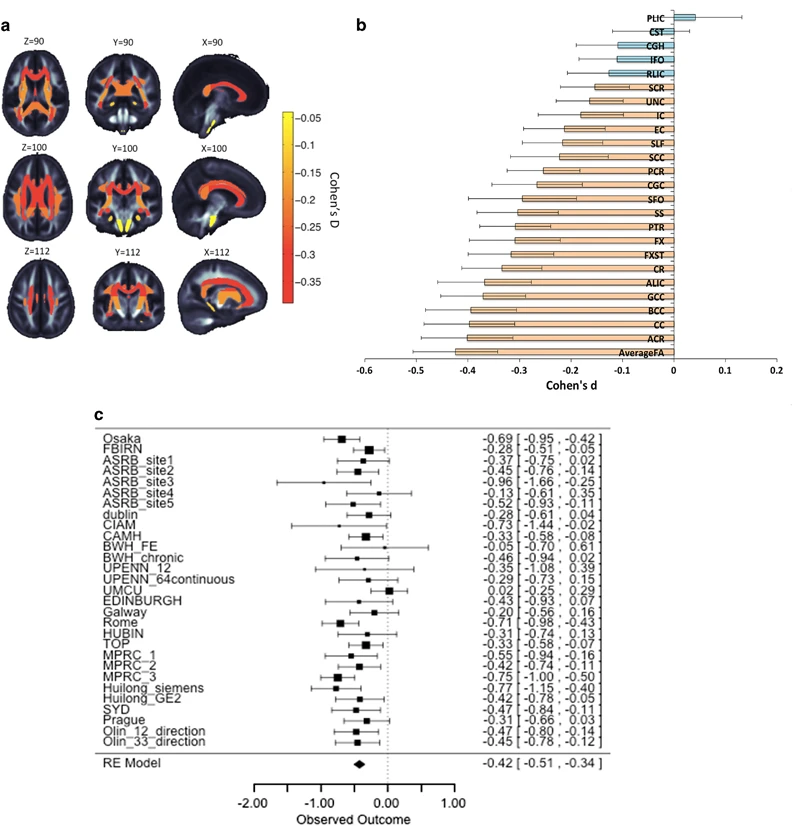2:55
2022-03-22 07:52:04
Prelude
Today’s Topics
- Quiz 3 next Tuesday (after class)
- Wrap-up on bipolar disorder
- Schizophrenia
Schizophrenia
Simulating the Experience
Overview
- Lifetime prevalence ~ 1/100
- ~1/3 chronic & severe
- Onset post-puberty, early adulthood
- Pervasive disturbance in mood, thinking, movement, action, memory, perception
Screening (Yale PRIME test)
- I think that I have felt that there are odd or unusual things going on that I can’t explain.
- I think that I might be able to predict the future.
- I may have felt that there could possibly be something interrupting or controlling my thoughts, feelings, or actions.
Screening (continued)
- I get confused at times whether something I experience or perceive may be real or may be just part of my imagination or dreams.
- I have thought that it might be possible that other people can read my mind, or that I can read other’s minds.
- I wonder if people may be planning to hurt me or even may be about to hurt me.
Historical background
- Bleuler
- Coined term “schizophrenia” or “split mind”
- NOT multiple personality disorder
- Kraeplin
- Dementia Praecox and Paraphrenia (1919)
- Emphasized developmental and hereditary origins
“Positive” symptoms
- “Additions” to behavior
- Disordered thought
- Delusions of grandeur, persecution
- Hallucinations (usually auditory)
- Bizarre behavior
“Negative” symptoms
- “Reductions” in behavior
- Poverty of speech
- Flat affect
- Social withdrawal
- Impaired executive function
- Anhedonia (loss of pleasure)
- Catatonia (reduced movement)
Cognitive symptoms
- Memory
- Attention
- Planning, decision-making
- Social cognition
- Movement
Biological bases
- Genetic disposition
- Brain abnormalities
- Developmental origins
Genetic disposition
But, no single gene…
Genes associated with schizophrenia at higher than chance levels
- NOTCH4, TNF:
- Part of major histocompatibility complex (MHC), cell membrane specializations involved in the immune system
- DRD2 (dopamine D2 receptor), KCNN3 (Ca+ activated K+ channel), GRM3 (metabotropic glutamate receptor)
Ventricles larger, esp in males
Cause or effect?
Ventricular enlargement increases across time (Kempton, Stahl, Williams, & DeLisi, 2010)

Enlargement precedes diagnosis?
Hippocampus, amygdala, thalamus, nucleus accumbens smaller
- Related to ventricular enlargement?
- Early disturbance in brain development?
(Erp et al., 2015)
Rapid gray matter loss in adolescents?
Widespread disruption in white matter connectivity (Kelly et al., 2017)
White matter loss over age
Dopamine hypothesis
Evidence for DA hypothesis
- DA (D2 receptor) antagonists (e.g. chlorpromazine)
- improve positive symptoms
- Typical antipsychotics are DA D2 receptor antagonists
- DA agonists
- amphetamine, cocaine, L-DOPA
- mimic or exacerbate symptoms
Tardive Dyskinesia a side effect of DA antagonists
Evidence against DA hypothesis…
- New, atypical antipsychotics
- (e.g. Clozapine) INCREASE DA in frontal cortex, affect 5-HT
- Mixed evidence for high DA metabolite levels in CSF
Glutamate hypothesis
- Psychomimetic drugs…
- Phencyclidine (PCP), ketamine
- NMDA receptor antagonists (NMCA glu + voltage-gated)
- …can induce schizophrenia-like states
- Schizophrenia == underactivation of NMDA receptors?
- NMDA receptor role in learning, plasticity
Early life stress increases risk
- Urban vs. rural living
- Exposure to infection in utero, other birth complications
(Levine, Levav, Pugachova, Yoffe, & Becher, 2016)
- Children (N=51,233) of parents who born during Nazi era (1922-1945)
- Emigrated before (indirect exposure) or after (direct exposure) to Nazi era
- Children exposed to direct stress of Nazi era in utero or postnatally
- Did not differ in rates of schizophrenia, but
- Had higher rehospitalization rates
(Debost et al., 2015)
- Danish cohort (n=1,141,447)
- Exposure to early life stress
- in utero did not increase risk of schizophrenia, but
- but exposure during infancy (0-2 years) increased risk
- Increased risk associated with an allele of a cortisol-related gene
Schizophrenia summed up
- Wide-ranging disturbance of mood, thought, action, perception
- Broad changes in brain structure, function, chemistry, development
Dopamine hypothesis-> glutamate hypothesis- Genetic (polygenic = multiple genes) risk + environmental factors
- One disorder or many?
Next time…
- Emotion, happiness, and reward
- Quiz 3 (after class)
References
Debost, J.-C., Petersen, L., Grove, J., Hedemand, A., Khashan, A., Henriksen, T., … Mortensen, P. B. (2015). Investigating interactions between early life stress and two single nucleotide polymorphisms in HSD11B2 on the risk of schizophrenia. Psychoneuroendocrinology, 60, 18–27. https://doi.org/10.1016/j.psyneuen.2015.05.013
Erp, T. G. M. van, Hibar, D. P., Rasmussen, J. M., Glahn, D. C., Pearlson, G. D., Andreassen, O. A., … Turner, J. A. (2015). Subcortical brain volume abnormalities in 2028 individuals with schizophrenia and 2540 healthy controls via the ENIGMA consortium. Mol. Psychiatry. https://doi.org/10.1038/mp.2015.63
Johnson, E. C., Border, R., Melroy-Greif, W. E., Leeuw, C. A. de, Ehringer, M. A., & Keller, M. C. (2017). No evidence that schizophrenia candidate genes are more associated with schizophrenia than noncandidate genes. Biol. Psychiatry, 82(10), 702–708. https://doi.org/10.1016/j.biopsych.2017.06.033
Kelly, S., Jahanshad, N., Zalesky, A., Kochunov, P., Agartz, I., Alloza, C., … Donohoe, G. (2017). Widespread white matter microstructural differences in schizophrenia across 4322 individuals: Results from the ENIGMA schizophrenia DTI working group. Mol. Psychiatry. https://doi.org/10.1038/mp.2017.170
Kempton, M. J., Stahl, D., Williams, S. C. R., & DeLisi, L. E. (2010). Progressive lateral ventricular enlargement in schizophrenia: A meta-analysis of longitudinal MRI studies. Schizophr. Res., 120(1-3), 54–62. https://doi.org/10.1016/j.schres.2010.03.036
Kochunov, P., Ganjgahi, H., Winkler, A., Kelly, S., Shukla, D. K., Du, X., … Hong, L. E. (2016). Heterochronicity of white matter development and aging explains regional patient control differences in schizophrenia. Hum. Brain Mapp., 37(12), 4673–4688. https://doi.org/10.1002/hbm.23336
Levine, S. Z., Levav, I., Pugachova, I., Yoffe, R., & Becher, Y. (2016). Transgenerational effects of genocide exposure on the risk and course of schizophrenia: A population-based study. Schizophrenia Research, 176(2), 540–545. https://doi.org/10.1016/j.schres.2016.06.019
Thompson, P. M., Vidal, C., Giedd, J. N., Gochman, P., Blumenthal, J., Nicolson, R., … Rapoport, J. L. (2001). Mapping adolescent brain change reveals dynamic wave of accelerated gray matter loss in very early-onset schizophrenia. Proceedings of the National Academy of Sciences, 98(20), 11650–11655. https://doi.org/10.1073/pnas.201243998



